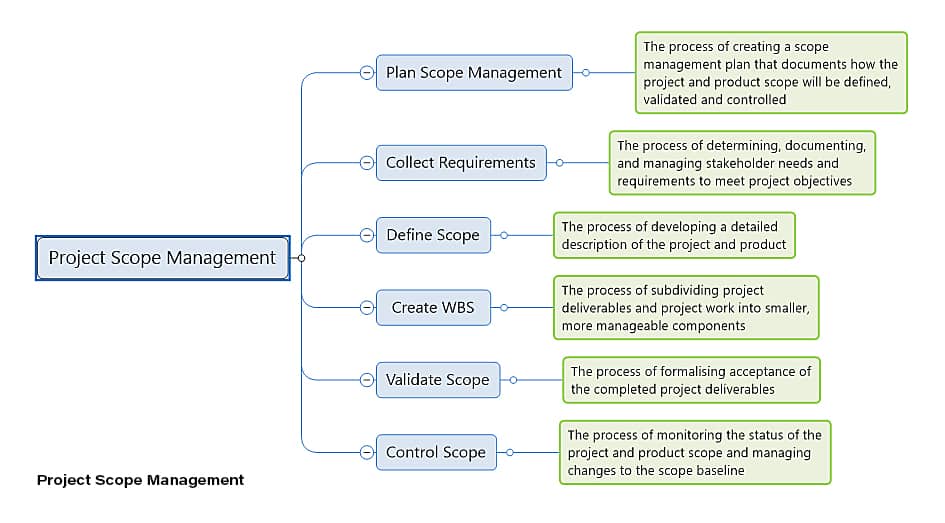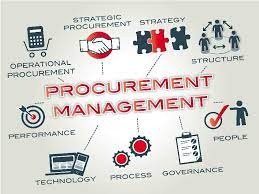A lot has been said and written about project scope management and its role in delivering successful projects. Whether you are a novice or a seasoned project manager, understanding project scope is critical to your success in project management.
But, before we get there, we need to define the scope of the project. This article will go over all there is to know about project scope and project scope management. We’ll also learn how to create a project scope management plan using an example.
What Is Project Scope and Project Scope Management?
First, let’s look at the definitions:
Project Scope
Project scope is a component of project planning that entails determining and recording a complete list of deliverables or features that will be included in the project’s execution.
In other words, the project scope defines the project’s goals and how to attain them.
If you’ve ever worked on a project, you’ve probably heard the term “project scope” a few times. It is most likely the most important aspect of good project management.
Project Scope Management
Project scope management refers to the methods that guarantee a project’s scope is appropriately specified and mapped. To execute the project on time, it must include only the necessary project information.
Project scope management’s primary concern is with regulating what is and is not inside the project. It is also critical in assisting project managers, coordinators, and supervisors in focusing on what is truly vital for the project and allocating the appropriate amount of work to team members to carry out the project effectively.
Let us compare project delivery to building construction to make things clearer. Before work begins, a fence is erected around the site. This is to define the construction’s borders so that those that are part of the construction team know where to stop. This is known as scope.
What is the definition of scope in project management?
When we talk about scope in project management, we are talking about two types of scope: product scope and project scope. Let’s take a quick look at them:
- The features and functionalities that will be included in a product are referred to as its scope. Simply expressed, it refers to what a customer desires in a product or service. For example, if the product is a smartphone, the product scope will include things like screen size, battery backup, memory, CPU speed, and so on.
- The effort required to successfully produce a product (or service) with the stated features and functions is referred to as project scope. For example, if you’re required to create a software application, the project scope is the work that must be completed to create a software program with sufficient functionality.
- A significant amount of efforts, such as planning, coordination, and management activities, must be completed to ensure that both the product scope and the project scope are met. After that, the finished work is compared to the project’s actual scope.
The Project Scope Statement
There are different documents in project management, but one of the most significant projects scope documents is the scope statement document. The scope statement specifies the expected outcomes, assumptions, limitations, as well as other critical elements under which the project will be completed.
It also defines the project’s limits, assigns work duties to each team member, and outlines the procedures to follow throughout the project’s lifecycle. It is also known as the scope statement, the statement of work, or the terms of reference.
The following items may be included in the project scope statement:
- The scope of the product
- The scope of the project
- Deliverables list
- Criteria for Acceptance
- Exclusions from the project
- Limitations
- Assumptions
Importance of Project Scope Management
Demands are expanding like never before as projects become larger and more complicated. Every significant project necessitates more time, effort, and resources to see it through. That is why it is critical to specify the scope of both the product and the project.
It allows you to stay focused on the work covered in the scope management plan while also keeping in mind that if unexpected changes occur, they will have an impact on time, cost, quality, resources, and even customer satisfaction. Because information is acquired from all stakeholders and sponsors in advance, there is less likelihood of inaccurate information being gathered, which might be detrimental to the project’s success. As a result, the function of scope project management is critical in determining project success.
Project Scope Management Processes
Scope management is comprised of six processes, according to the PMBOK:
- Project Scope management plan
- Collecting requirements
- Defining scope
- Creating the Work Breakdown Structure
- Validating scope
- Controlling scope
#1. Create Project Scope Management Plan
This is the first step in the process of project scope management. This procedure, which was recently added to the fifth edition of the PMBOK, creates a scope management plan based on input from the project plan.
The table below summarizes the plan scope management process’s inputs, tools, approaches, and results.
| INPUTS | TOOLS AND TECHNIQUES | OUTPUT |
| Project management plan | Expert judgment | Scope management plan |
| Project charter | Meetings | Requirements management plan |
| Enterprise environmental factors | ||
| Organizational process assets |
The document does not have to be lengthy, detailed, or formal. It should be easy to understand by all and serve its purpose.
#2. Collecting requirement
The following step is to determine stakeholder requirements and expectations. Through interviews, surveys, and focus groups, they will expect you to document all project needs, expectations, budgets, and deliverables.
This is a critical step because, more often than not, stakeholders have unrealistic requirements or expectations, and project managers must step in to find a solution that is acceptable to everyone to avoid project delays.
At the end of the requirements collection stage, you should have the following:
- Both functional and non-functional requirements must be met.
- Stakeholder expectations
- Business necessities
- Support and training are required.
- Project specifications
#3. Defining the scope
At this point, you must translate your requirements into a detailed description of the service or product that you hope to deliver through the project. You will then have a project scope statement to which you can refer throughout the duration of your project.
While it is important to list what is within the scope of the project, it is equally important to note what is outside of the scope of the project. Any changes to the scope would then have to go through the complete change control procedure to guarantee that the team is only working on what they need to work on.
You obtain a reference point for your project team and everyone else engaged when you specify the scope. If something is not included in the scope, it does not need to be completed by the team.
#4. Developing a work breakdown structure
A work breakdown structure (WBS) is a document that breaks down all of the work that must be completed in a project and then assigns all of the tasks to team members. It outlines the deliverables as well as their respective deadlines.
For this part of the process, you can utilize project management software to assign and prioritize tasks, making it easier to track the overall progress of the project and minimize any unneeded bottlenecks.
#5. Validating Scope
The scope and deliverables that you have recorded must be delivered to project executives and stakeholders in this step to obtain the necessary approvals. Before beginning the project, scope validation should be performed to guarantee that if something goes wrong, it is straightforward to determine where it went wrong.
#6. Collecting Scope
Project managers must ensure that as soon as the project begins, it stays within the established scope. If something needs to be changed, the right change control procedure should be performed.
Example of a Project Scope Management Plan
An example of a Project Scope Management plan is shown below.

5 Pointers for Efficient Project Scope Management
- Make a Work Breakdown Structure (WBS) because it will break down the scope statement into smaller, more manageable parcels.
- Also, avoid ambiguity in your scope to avoid extra effort and stress. Define it as precisely as you can.
- To avoid misinterpretation of requirements, make the process of determining scope a collaborative one.
- To avoid any scope expansion beyond what was initially specified, make sure the scope document is not changed during project execution.
- Finally, spend your time consulting with all important stakeholders and defining the project scope, as it cannot be changed once it is decided.
Final Thoughts
Setting a specified project scope enables teams to manage their overall workload more efficiently. A successful project scope, with the help of project management software, helps start the project on the right foot and ensures it is delivered on time and under budget while fulfilling end-user expectations.
Project Scope Management FAQ’s
What is Project Scope Management Plan?
The Project Scope Management Plan is a collection of methods used to guarantee that the project contains all of the tasks needed to complete the project while excluding those work/tasks that are outside of scope.
What is a key benefit of a project scope management plan?
The primary advantage of this procedure is that it provides guidance and direction on how the scope will be maintained throughout the project.
What is included in project scope?
A scope statement, which is often created by the project manager, covers the whole project, including any deliverables and their characteristics, as well as a list of stakeholders who will be affected. It will also include any important project objectives, deliverables, and goals that will aid in measuring success.
- Stakeholder Management Planning And Strategies
- Stockholder Equity: How To Calculate Stockholders’ Equity
- Stakeholder Mapping: Guide to the Mapping Tool for Effective Stakeholder Management
- Stakeholder Analysis: Definitive Guide To The Stakeholder Analysis Process
- Marketing Management: All You Need to Know






